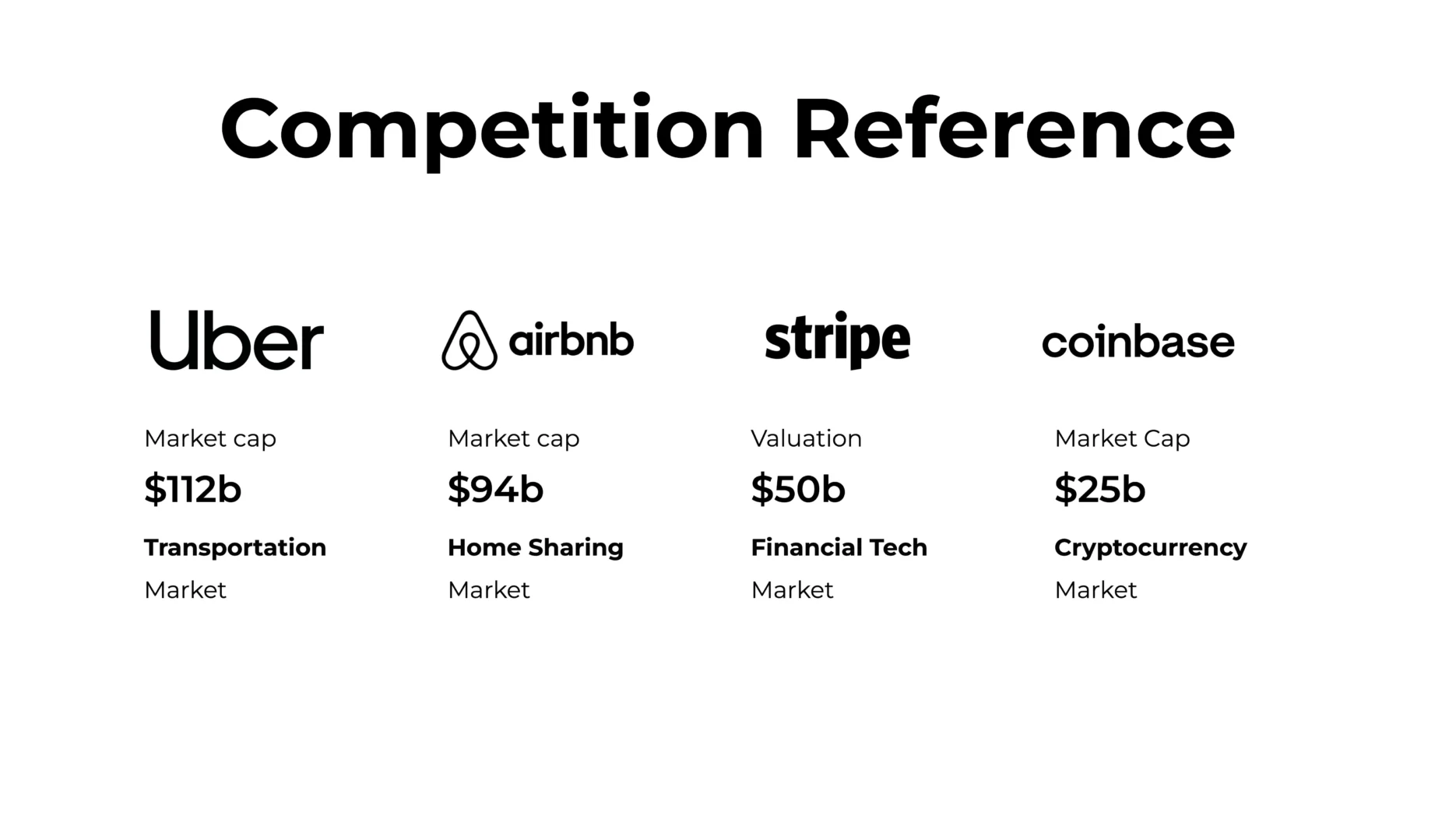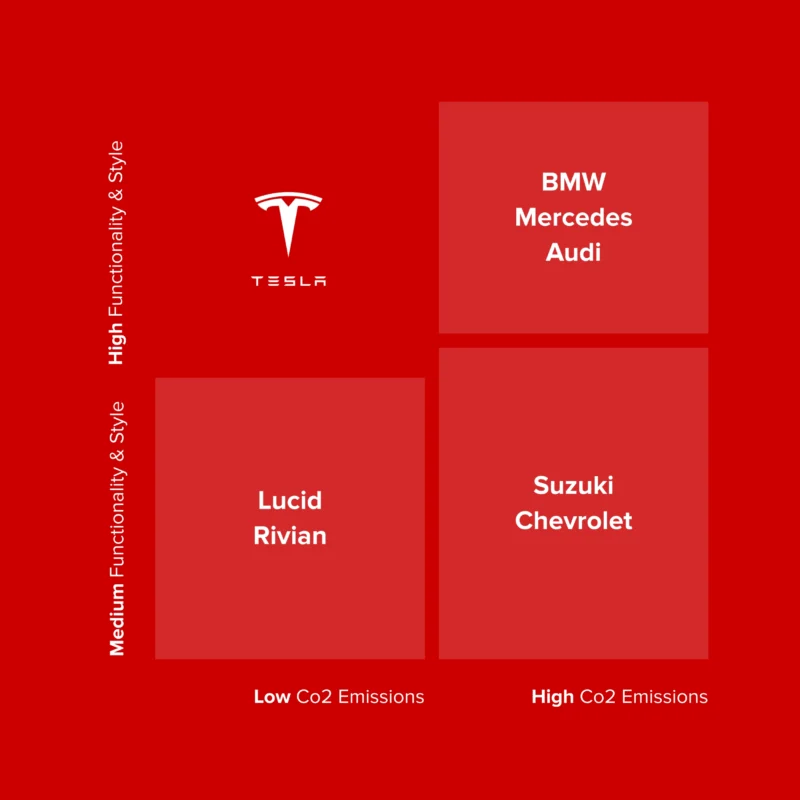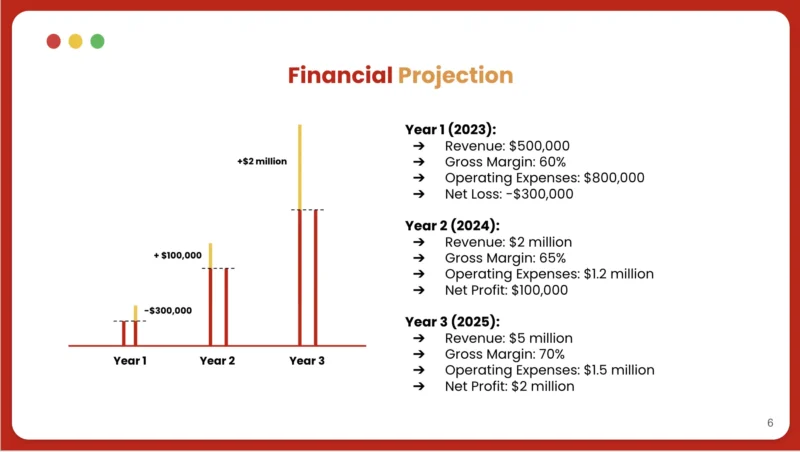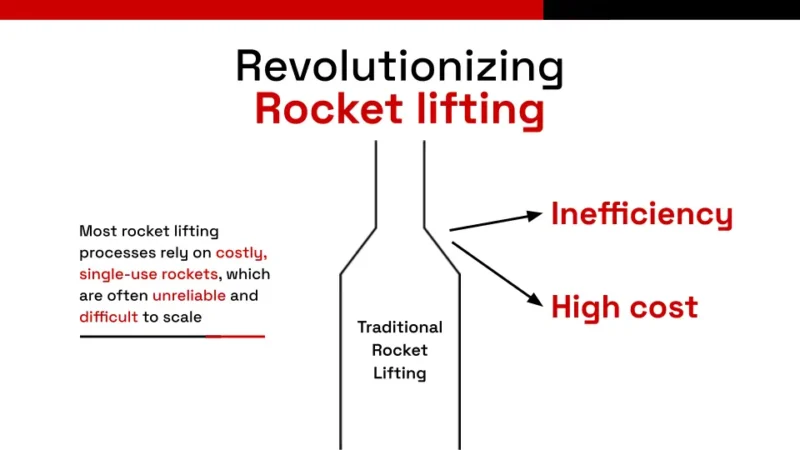Picture this: You’re in the biggest pitch of your life, and it’s time to talk competition. Your palms are sweaty, but you’re not worried. Why? Because you’ve got the ultimate ace up your sleeve – the Competition Pitch Deck Slide. This isn’t just any slide; it’s the crystal ball that shows your investors how well you understand the market and your place in it. In the startup world, knowledge is power, and this slide is your battleground. Let’s break down the three forms that make this slide a game-changer.
The Vitality of the Competition Slide
Imagine you’re a detective in a crime thriller, and the competition slide is your evidence board. It’s where you map out the who’s who of the industry, draw connections, and highlight your strategy to outsmart them all. This slide is vital because it shows you’re not walking blind into a market; you know the giants you’re up against, and you’ve got a plan.
Form 1: The Market Caps of Industry Leaders
Talking about market caps is like discussing the heavyweights in a boxing ring. These numbers don’t lie. They show who’s been pumping iron in the financial gym and who’s just flexing in the mirror. We’ll explore why relying on solid, quantifiable data like market caps gives you more credibility than relying on speculative growth charts.
In the world of startups and investments, numbers speak louder than words, and this is where the market caps of industry leaders come into play. Market capitalization, or market cap, is like the scoreboard in the high-stakes game of business. It tells you at a glance who the major players are and how they stack up against each other in terms of financial clout.
But why does this matter? Because market cap is a tangible, hard number derived from stock prices and shares outstanding. It’s a metric that’s grounded in reality, unlike those overly optimistic projections or growth charts that feel like they were cooked up in someone’s basement. Market cap gives you and your investors a clear, unfiltered view of the competitive landscape.
When you showcase the market caps of industry leaders in your pitch, you’re doing more than just throwing numbers on a slide; you’re setting the stage. It’s like saying, “Look, these are the Goliaths in our industry. And here’s how we, the Davids, plan to compete or even outperform them.”
This section of your competition pitch deck slide isn’t just informative; it’s strategic. It’s your chance to show that you’re not just another dreamer with a big idea. You’re a realist who understands the market dynamics and knows exactly where you stand. It’s about proving that while you may be smaller, you’re smart, agile, and ready to carve out your own space in the market.
Remember, in the world of startups, knowledge is power. And knowledge about your competitors, especially how they fare financially, is like having a cheat sheet. It prepares you for the tough questions and shows your investors that you’ve done your homework. So, when you’re putting together that competition pitch deck slide, think of the market cap section as your opening gambit in the chess game of business strategy.
Competition Pitch Deck Slide Form 2: XY Chart
Here’s where things get interesting. The XY chart is like the popular kid in school – everyone wants to hang out with it. Why? Because it makes understanding complex market positions as easy as checking out a social media profile. It’s visual, it’s straightforward, and it’s effective. We’ll dive into why this form is a hit, especially among startups.
The XY chart is the visual superstar of your pitch deck. Think of it as the Instagram of data presentation – it’s where complex information becomes instantly understandable and even a bit fun. For startups, this chart is a goldmine because it lets you plot your company against known competitors on two key axes, like price versus quality or technology versus user-friendliness.
What makes the XY chart so compelling is its ability to simplify the competitive landscape. It’s like taking a snapshot of the industry and pointing out, “Here’s where we stand.” This visual representation is powerful because it helps investors instantly grasp where you fit in the grand scheme of things. They can see at a glance who your main competitors are and how you differ.
The real beauty of this chart lies in its simplicity and familiarity. Investors see dozens of pitches; they don’t have the time or desire to decode complex data. The XY chart speaks their language. It’s like showing up to a foreign country and finding out everyone speaks English. Relief, right?
When you use an XY chart in your competition pitch deck slide, you’re not just presenting data; you’re telling a story. Your startup is the protagonist, and the chart sets the scene, showing how you navigate the competitive landscape. It’s a story of positioning, strategy, and potential, told in a way that’s as easy to understand as your favorite Netflix series.
So, embrace the XY chart. It’s your ally in making a complex business world a little simpler and a lot more engaging for those crucial investors.
Competition Pitch Deck Slide Form 3: USP
The Unique Selling Proposition (USP) section of your competition pitch deck slide is where you get to shine a spotlight on what makes your startup uniquely awesome. It’s your chance to answer the big question on every investor’s mind: “Why should I care about this company?”
In this section, think of your USP as your superhero power. It’s not just about being different; it’s about being different in a way that matters, in a way that solves a problem no one else can. This is where you get to brag a bit, but it’s a humble brag. You’re not just saying you’re better; you’re showing how and why.
Your USP could be anything from a groundbreaking technology, an innovative business model, to an exceptional customer experience. It’s the secret ingredient in your recipe for success. The key here is to be clear, concise, and compelling. You want your investors to walk away with a crystal-clear understanding of what sets you apart from the crowd.
Remember, the USP section isn’t just a list of features. It’s a narrative about value, innovation, and problem-solving. It’s your opportunity to make a lasting impression, to plant a flag in the minds of your audience and say, “This is who we are, and this is why we matter.”
I’ve also designed those three slides in a micro real-content template if you wish to check it out!
Finally, if you want to follow a specific form for a pitch deck, you need to study the market. The Guy Kawasaki form for example, could be very helpful, but not at all times.





